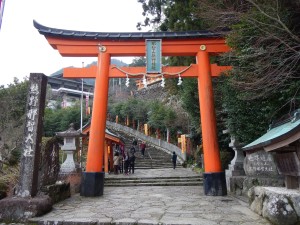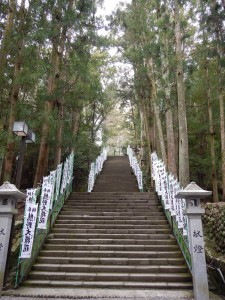When Westerners think of pilgrimage sites, Santiago, Rome, and Jerusalem all spring to mind. Japan’s pilgrimage network, the Kumano Kodō (or Kumano Sankeimichi), is somewhat less well known outside of Asia. The Kumano’s series of routes runs across the Kii Hantō peninsula, toward the Kumano Sanzan (Three Grand Shrines of Kumano): Kumano Hongu Taisha, Kumano Hayatama Taisha, and Kumano Nachi Taisha. “Kumano” refers historically to the southern portion of the peninsula, an area of particular spiritual significance, though it is no longer an officially recognized region. The routes span across and wrap around the tip of the peninsula, and three of them converge in Tanabe City in the Wakayama Prefecture. (CNN has an excellent guide and image gallery.)
A testament to cultural convergence, the Kumano Kodō has blended Buddhist and Shinto significance. Earliest records of the route date back to the tenth century, and the pilgrimage experienced its golden age in the eleventh century when members of Japan’s imperial family made the journey repeatedly. Aristocrats and samurai continued the tradition, and the pilgrimage became customary for commoners in the fifteenth century. The Kumano suffered from the opening of Japan in the 1850s as well as increased governmental regulation of religious expression, but experienced a resurgence in the late 1990s. It was designated a UNESCO World Heritage Site in 2004.
The similarities between the Camino de Santiago and the Kumano Kodō inspired a partnership between the two routes, and tourism councils of each have made efforts recently to promote both routes. The relationship, established officially by city leaders in Santiago and Tanabe in May 2014, is coming up on its anniversary. Last month Eric Bruce became the first person to be recognized as a “dual pilgrim” for completing both pilgrimages.
Camino/Kumano has such a nice ring, doesn’t it?
Share This:


